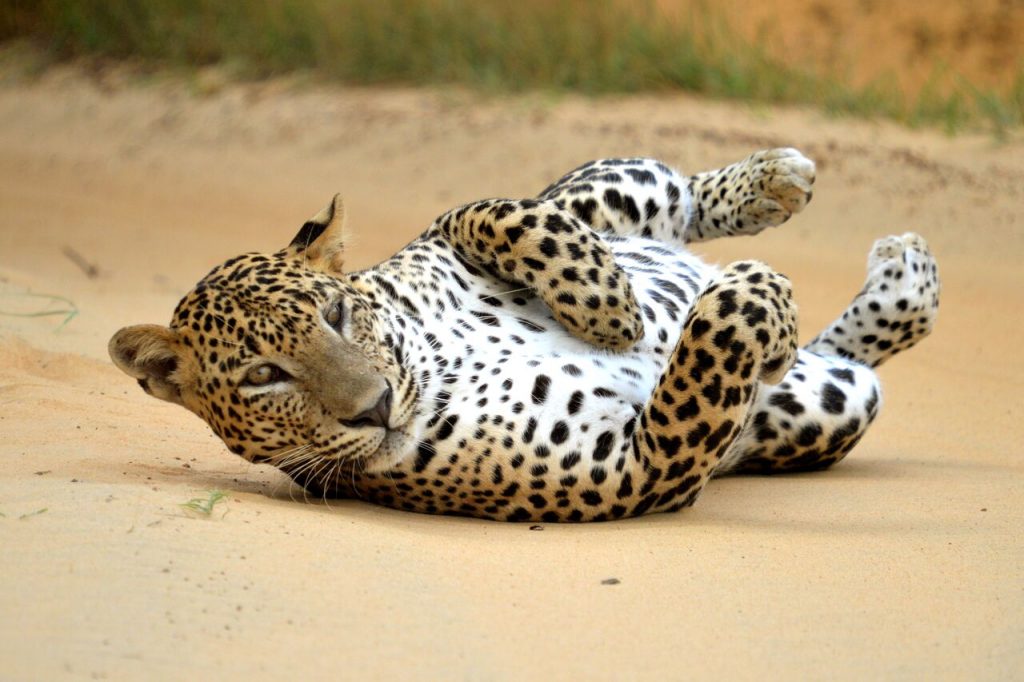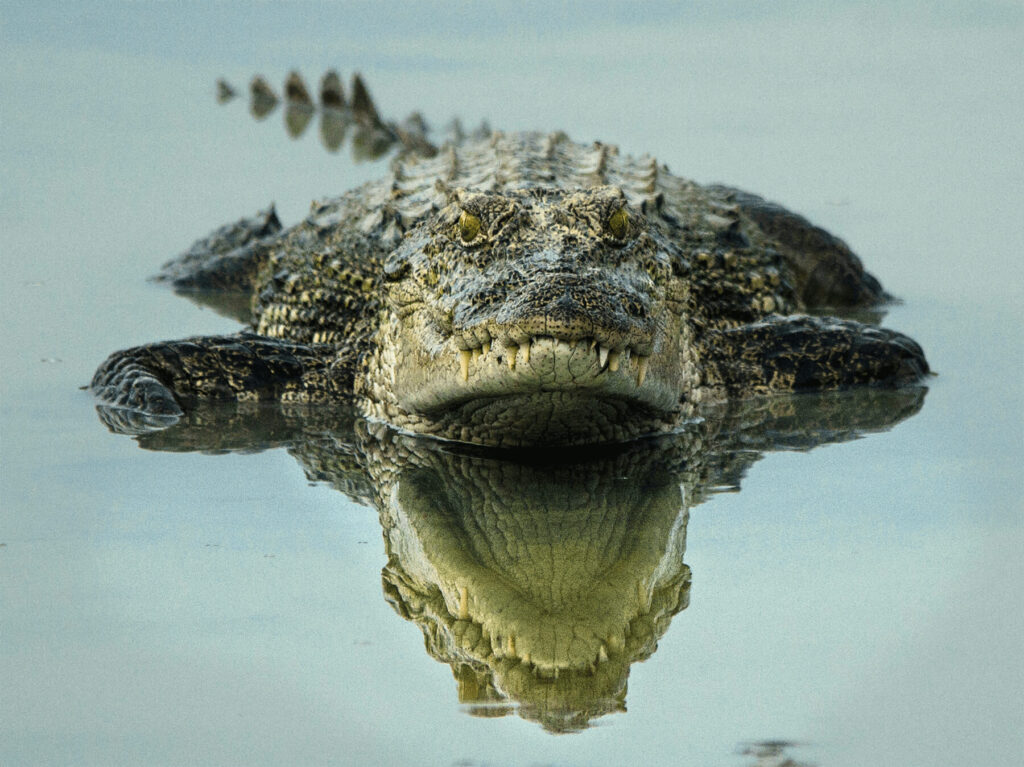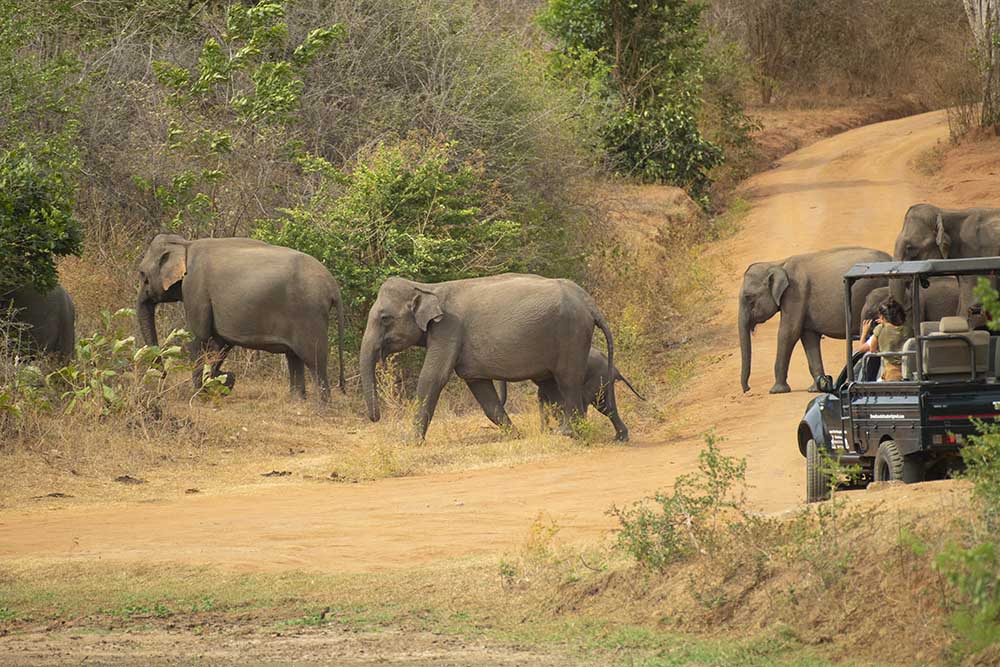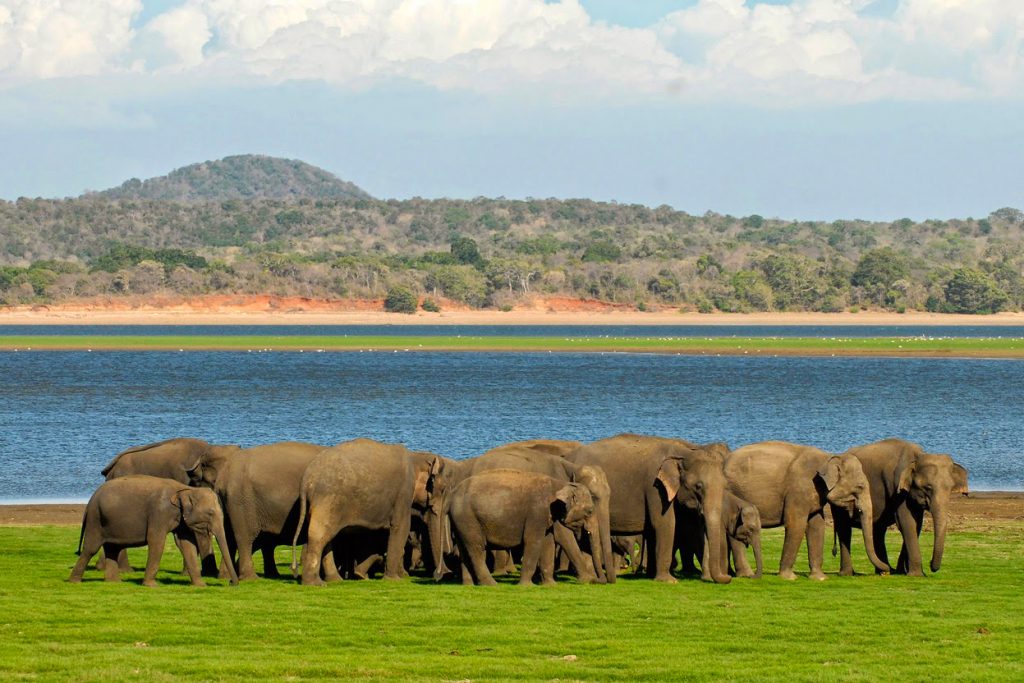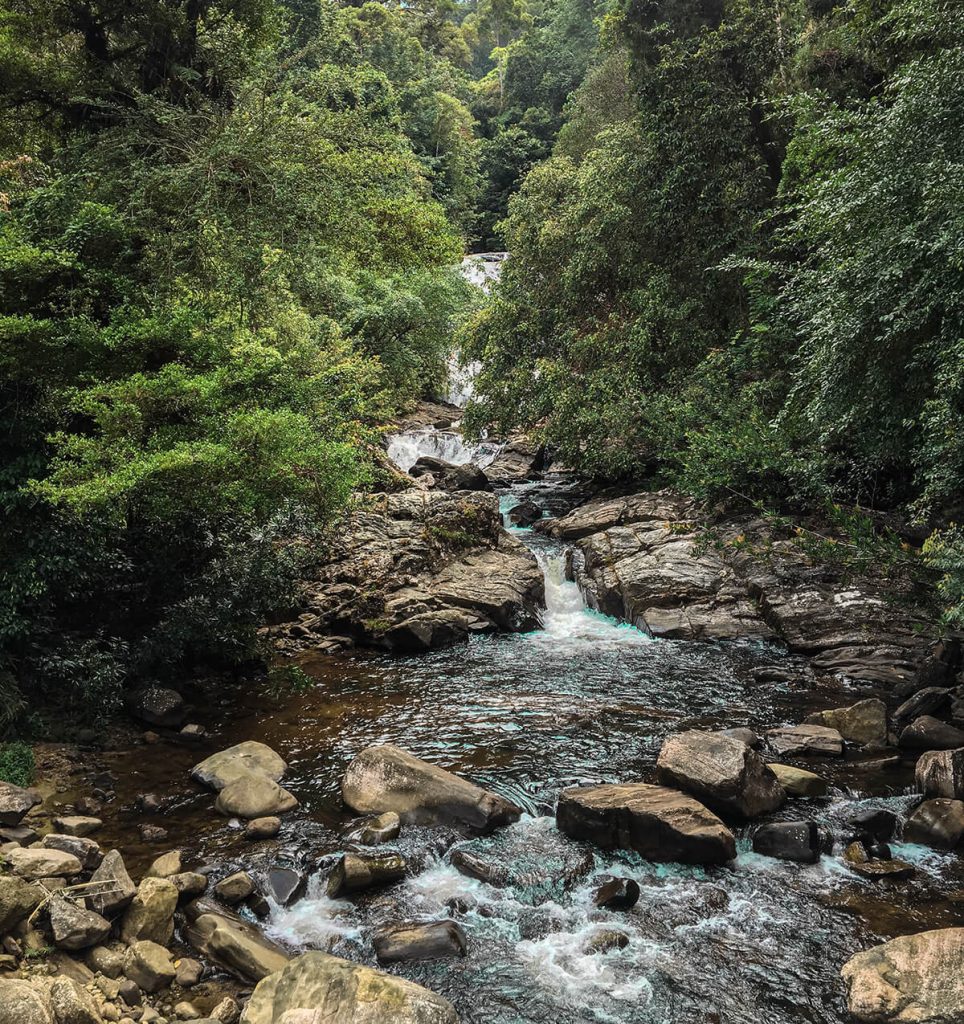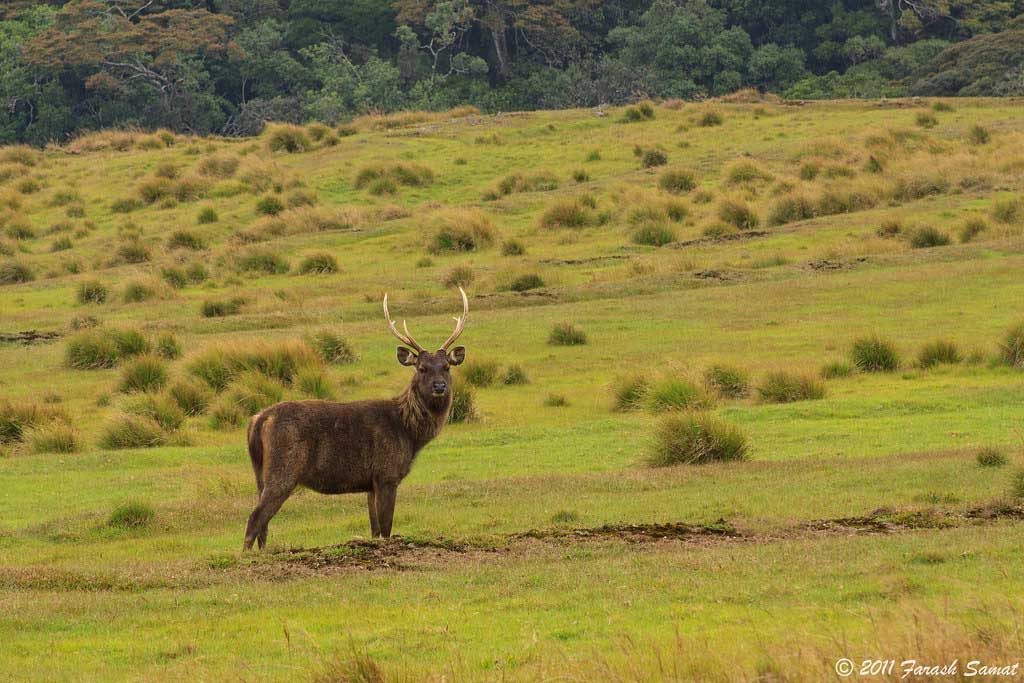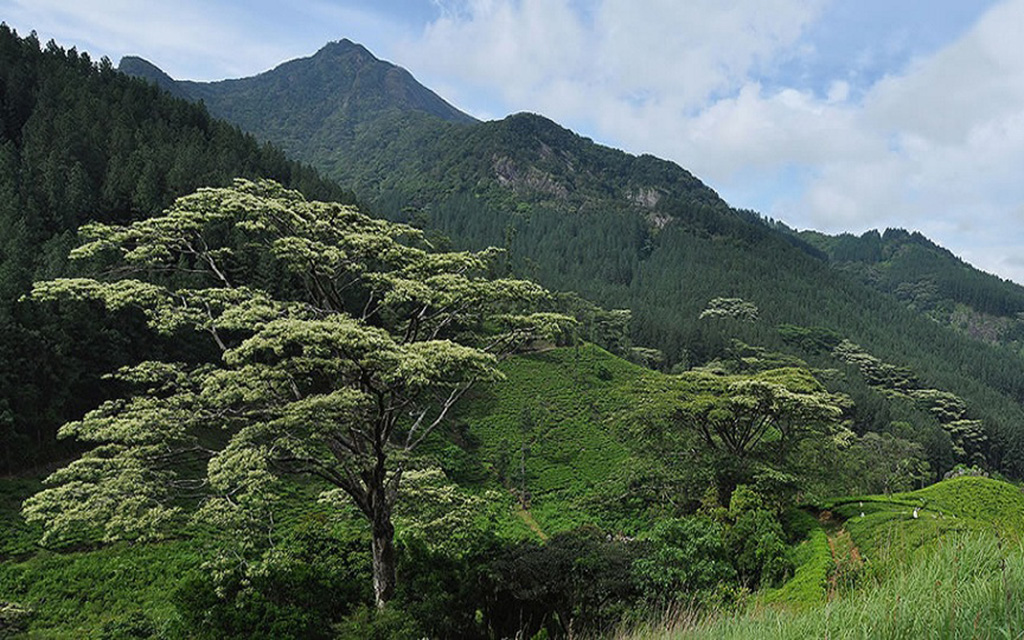[ad_1]
From the mighty blue ocean to the dry plains swathed in thick jungles, from deep in the rainforest to high montane cloud forests, biodiversity-rich Sri Lanka is a top wilderness destination. Embellished by rivers, lakes, mountains, hills, waterfalls and mangrove swamps, the landscape is a tapestry of untamed beauty. Whether you are mesmerised by the majestic Asian elephant bathing in a lake, eager to spot an elusive leopard basking on a tree or witness the ostentatious feathery display of a colourful peacock, the island nation does not disappoint. So, with a gamut of wild experiences awaiting discovery, which would you pick? Here are our top picks to get you started on an exotic wilderness treat.
Best National Parks in Sri Lanka
Sri Lanka has officially designated 26 national parks, including 3 marine national parks.
Yala National Park
It is the most visited national park in Sri Lanka, known for big mammal sightings – elephant and leopard. Located in the southeast of the island, bordering the Indian Ocean, the park features various ecosystems, including moist & dry monsoon forests, savannah grasslands and freshwater & marine wetlands. The protected area spans 130,000 hectares and has 5 blocks, block 1 being the most popular. It also boasts the world’s highest density of leopards per square kilometre, offering close encounters and stunning photography opportunities. The park is one of the 70 Important Bird Areas in Sri Lanka.
Yala is worth the visit throughout the year. The park closes from September to October due to severe dry weather. Closing the park allows animals to roam without disturbance in search of water. May to October is the dry season. May to June is less crowded, and animals gather at waterholes. November to February is the rainy season. After the monsoon and inter-monsoon rains, the park rejuvenates, and sightings are also good.
Wilpattu National Park
Wilpattu, enveloped in the dense jungles in the northwest coast lowland dry plains, is the largest and oldest national park in Sri Lanka. Located 19 miles west of Anuradhapura, the ancient capital of Sri Lanka, with a wealth of Buddhist monuments and shrines, you can also explore the many wonders of the Cultural Triangle. The northwest point of Wilpattu was the birthplace of the Sinhalese Kingdom after Prince Vijaya landed in Thambapanni, now known as Kudrimalai Point (Horse Point).
Taking its name after ‘willus,’ large sand-rimmed natural lakes that collect rainwater, the park has more than a hundred willus. The lakes provide thriving ecosystems for numerous bird species and other animals. There is a significant leopard population and elephants, sloth bears, water buffalo and deer, among other mammals.
Wilpattu National Park is also a year-round destination. However, the most popular time to visit is during May to September, in the dry season. At the onset of the drought in early October, animals congregate at waterholes, offering better sightings. The northeastern monsoon brings rainfall from October until December. The park comes alive after the rains, with vegetation sprouting and turning lush and green. Kaleidoscopes of butterflies mark the end of the rainy season. You will often see sloth bears scoffing down the succulent palu fruit, a native tree of the dry zone.
Udawalawe National Park
Udawalawe National Park is one of the finest nature reserves in the world for elephant watching. Its low-lying scrub and dry, mixed evergreen forest heighten visibility. Situated on the southern periphery of the island’s central hills, it sits on the boundary between the wet and dry zones. Formed as a sanctuary for the elephants displaced by the Udawalawe Reservoir built on the Walawe River, 600-700 elephants roam its confines.
The reservoir, Walawe River and its tributaries create habitats for species, including riverine forests, wetlands, scrublands and open plains. Although Leopards live in the park, they keep a low profile. Plenty of mugger crocodiles are about, and you can spot them on your drives.
December to March is the best time to visit the park during its dry season when the animals come out to drink and bathe in the water bodies. You can also see migrant birds during this time.
Most unique wildlife experiences
What’s iconic and singular in Sri Lanka’s wilderness? We vote for the elephant gatherings and rare species in exotic rainforests.
Minneriya elephant gathering
Built by King Mahasen in the 3rd century AD, during the golden era of the ancient Anuradhapura Kingdom, the Minneriya reservoir is one of the largest and oldest reservoirs in Sri Lanka. Minneriya National Park consists of its catchment area and is the feeding ground for elephant populations in three districts during the dry season.
Its grassy plains offer generous sightings of elephants that congregate here. May to September is its dry season, and more than 300 elephants gather in the park, dubbing it The Great Elephant Gathering. Elephants also migrate from the nearby Wasgamuwa National Park.
It is also one of the Important Bird Areas of Sri Lanka. You can watch water birds, such as little cormorants, painted storks, great white pelicans, spot-billed pelicans and herons, fishing in the shallow waters of the reservoir. Several other reservoirs in the area, including Kaudulla and Giritale, contribute to a biodiversity-rich ecosystem.
Sinharaja Rainforest
Designated as a Biosphere Reserve and World Heritage Site by UNESCO, it is the island’s last viable area of primary tropical rainforest. It is one of the densest rainforests in Asia and has a remarkably high level of endemism. Situated in the southwest lowland wet zone of Sri Lanka, the Sinharaja Rainforest spans the districts of Galle, Matara and Ratnapura, extending across the boundary between the Sabaragamuwa and Southern Provinces.
95% of bird species and more than 50% of mammal and butterfly species here are endemic. Trekking in Sinharaja is one of the most unique experiences in Sri Lanka. Rare plant species, trees and animal species offer extraordinary sights.
Top family-friendly wildlife activities
Day trips and short stops kids would love on your wildlife odyssey in Sri Lanka.
Dehiwala Zoo
Also known as the National Zoological Gardens, founded in 1936, Dehiwala Zoo is home to various birds, mammals, reptiles, fish and amphibian species, endemic and from other parts of Asia and the world. It is one of the oldest zoos in Asia and one of the most popular places to visit with kids. Open year-round and located conveniently in Dehiwala, Colombo, it is accessible by both public and private transport. Kiosks selling fruit pickles, cotton candy, snacks and drinks are available on zoo premises.
Elephant Freedom Project
It is a family-run ethical shelter that provides a sanctuary for rescued captive elephants. They provide safety and well-being for the elephants and do not use them to perform tricks or for riding. However, you can walk with them for about 2 hours on the estate and bathe them. You can accompany the elephants while they go about their daily lives. A basket of fresh fruit provided by the shelter offers you the chance to interact gently with these mighty giants as they approach you. They only allow a limited number of tourists, so book in advance. The shelter is in Kegalle, between Colombo and Kandy.
Millennium Elephant Foundation
They rescue captive elephants in Sri Lanka and care for them on a 15-acre estate 10 km northwest of Kegalle in the Sabaragamuwa Province. Founded with the assistance of World Animal Protection, the sanctuary provides proper care and medical treatment for elephants rescued from captivity. The charity identifies mistreated elephants and subsequently works to relocate them to the sanctuary grounds by paying the elephant owners a monthly wage.
MEF promotes awareness about the crippling conditions of captive elephants throughout the country. MEF also runs the Footsteps Elephant Consultancy, the only mahout training program recognised and accredited by the Sri Lankan Department of Wildlife. It is the only certified non-profit organisation working with captive elephants in Sri Lanka today.
Tourists can observe, interact and walk with the elephants and assist with their daily washing in the Kuda Oya River that runs through the grounds. The funds generated from visitors and volunteers enable the care and rescue of more captive elephants.
Active Sri Lanka Wildlife Experiences
Hiking, walking, climbing, biking and camping – it’s all go in the wild.
Horton Plains National Park
This undulating plateau, covered in grasslands and shrublands, quilted with a patchwork of cloud forests, rocky outcrops, waterfalls and lakes, is in the heart of Sri Lanka’s Highlands. Rising over 2000m, Horton Plains National Park lies in the backdrop of the island’s second and third-highest mountains. It is a UNESCO Heritage Site, designated for its outstanding universal value.
There’s plenty of wildlife about, largely elusive. Slender loris and purple-faced langur are endangered species inhabiting the plains. Leopards are also spotted once in a way. Its mild temperature and montane forest are perfect for hiking. The park also features the famous Baker’s Falls.
It is the aesthetics of the landscape that is the most striking feature. And nothing is more striking and starker than the sudden end to the plateau that forms the World’s End. The escarpment, plunging 1200m, offers stunning views of the valley below. On clear days, the views extend all the way to the south coast.
Knuckles Mountain Range
Named after its shape – folded knuckles, the UNESCO-designated mountain range has five main peaks in a series of recumbent folds. While this is the name given by British surveyors of Colonial Ceylon, the locals traditionally referred to it as Dumbara Kanduvetiya or misty mountain range.
It is one of the largest and least disturbed remaining areas of the submontane and montane rain forests of Sri Lanka. Various microclimates and ecosystems are present here. Knuckles is a biodiversity hotspot with a high degree of endemism.
Among the mammals recorded here are samburs, spotted deer, barking deer, giant squirrel, wild buffalo, wild boar, black-naped hare, jackal, leaf-nosed lizard, the endemic toque macaque & purple-faced langur is commonly seen. You may also see fishing cats and mouse deer. While elephants and leopards also roam its territory, their sightings are not frequent. Out of the 130 bird species residing in the area, 20 belong to endangered species.
You will also encounter cascading waterfalls, traditional villages and terraced rice fields hidden on the mountainsides. Among many sites and attractions are the Mini World’s End, a dramatic 1,192-metre cliff with sweeping views of the mountain range and Duwili Ella, a 40-metre waterfall hidden deep within the forest with a cave inside the waterfall that allows you to get behind the waterfall.
Hiking here offers a wealth of unique experiences. However, these should be guided hikes due to the vastness and intricacy of the trails.
Peak wilderness adventures with Blue Lanka Tours
Sri Lanka is a treasure trove of extraordinary wilderness and wildlife attractions. From its dense rainforests to jungles inhabited by big cats and majestic Asian elephants, tropical adventures here are raw, untamed, unique and spectacular. Go deep into the heart of Sri Lanka’s amazing wilderness with bespoke travel by Blue Lanka Tours. Our curated itineraries include glamping in the wild, hikes with the experts, safe safaris, comfortable journeys, luxurious accommodation and sustainability. We support local communities and responsible tourism that does not harm the environment. How soon would you embark on a wilderness odyssey in Sri Lanka?
[ad_2]
Source link



